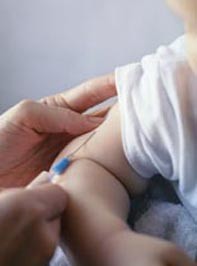Peer Reviewed
Feature Article Immunology and allergy
What’s new in childhood immunisation?
Abstract
Changes to the National Immunisation Program Schedule are influenced by changes in the epidemiology of vaccine preventable diseases, the availability of new vaccines and vaccine safety. Here is a review of recent additions and changes to the schedule.
Key Points
- In 2007, vaccination against human papillomavirus (HPV) infection and cervical cancer started under the National Immunisation Program (NIP) via school-based and GP delivery.
- In the same year, two oral vaccines for the prevention of rotavirus gastroenteritis were added to the NIP for infants.
- The meningococcal C vaccine campaign and ongoing immunisation with one dose of vaccine given to infants at the age of 12 months have led to a decline in the incidence of meningococcal C disease.
- Combination measles, mumps, rubella and varicella (MMRV) vaccines are being considered for incorporation on to the NIP, together with a possible move of administration of the second dose of MMR vaccine to the earlier age of 18 months.
- Strategies to prevent pertussis in vulnerable young infants include immunisation of their parents and carers with the adolescent/adult formulation of the dTpa vaccine, known as the ‘cocoon strategy’.
- Children are often ill with influenza and spread the infection to adults. The potential impact of routine annual influenza immunisation of young children is under study.
Purchase the PDF version of this article
Already a subscriber? Login here.

